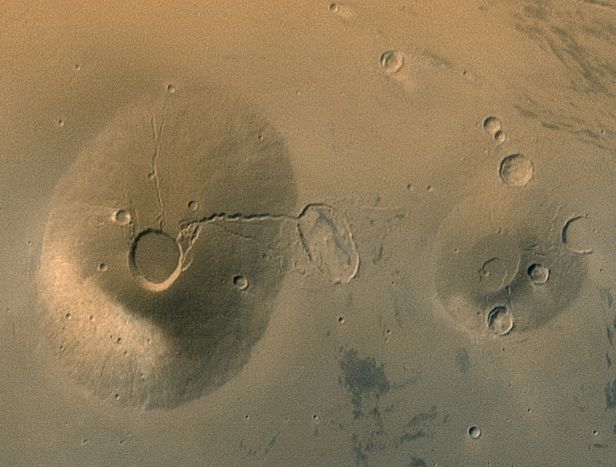Explanation: Findings of ancient martian microbial fossils in meteorites and liquid water related features on Mars' surface are currently controversial issues. But one thing long established by space-based observations of the Red Planet is the presence of volcanos, as Mars supports some of the largest volcanos in the solar system. This synthetic color picture recorded in March by the Mars Global Surveyor spacecraft shows two of them, Ceraunius Tholus (leftmost) and Uranius Tholus. Found north of the Tharsis region of truly large martian volcanos, these are actually two relatively small volcanos, Ceraunius Tholus being only about the size of the Big Island of Hawaii on planet Earth. Impact craters which overlay the volcanic martian terrain indicate that these volcanos are themselves ancient and inactive. North is to the right and the scene is illuminated by sunlight from the top left. A light region of dust deposited by recent global dust storms lies on the lower left flank of Ceraunius Tholus, whose summit crater is about 25 kilometers across.
1998 1999 2000 2001 2002 2003 2004 2005 2006 2007 2008 2009 2010 2011 2012 2013 2014 2015 2016 2017 2018 2019 2020 2021 2022 2023 2024 |
Январь Февраль Март Апрель Май Июнь Июль Август Сентябрь Октябрь Ноябрь Декабрь |
NASA Web Site Statements, Warnings, and Disclaimers
NASA Official: Jay Norris. Specific rights apply.
A service of: LHEA at NASA / GSFC
& Michigan Tech. U.
|
Публикации с ключевыми словами:
volcano - Mars - Марс - вулкан
Публикации со словами: volcano - Mars - Марс - вулкан | |
См. также:
Все публикации на ту же тему >> | |
